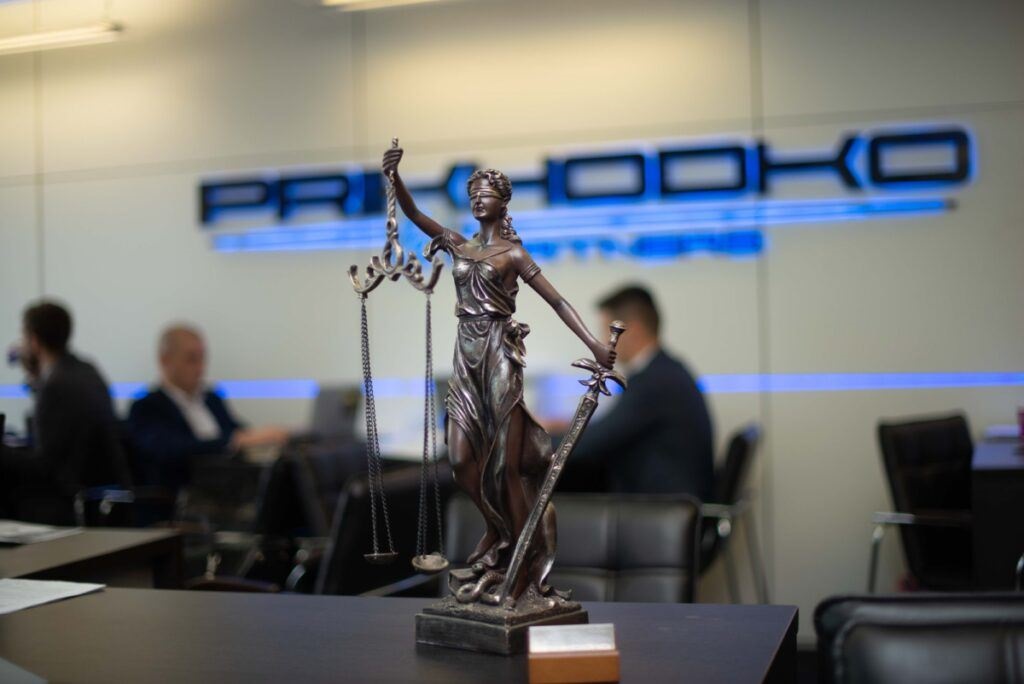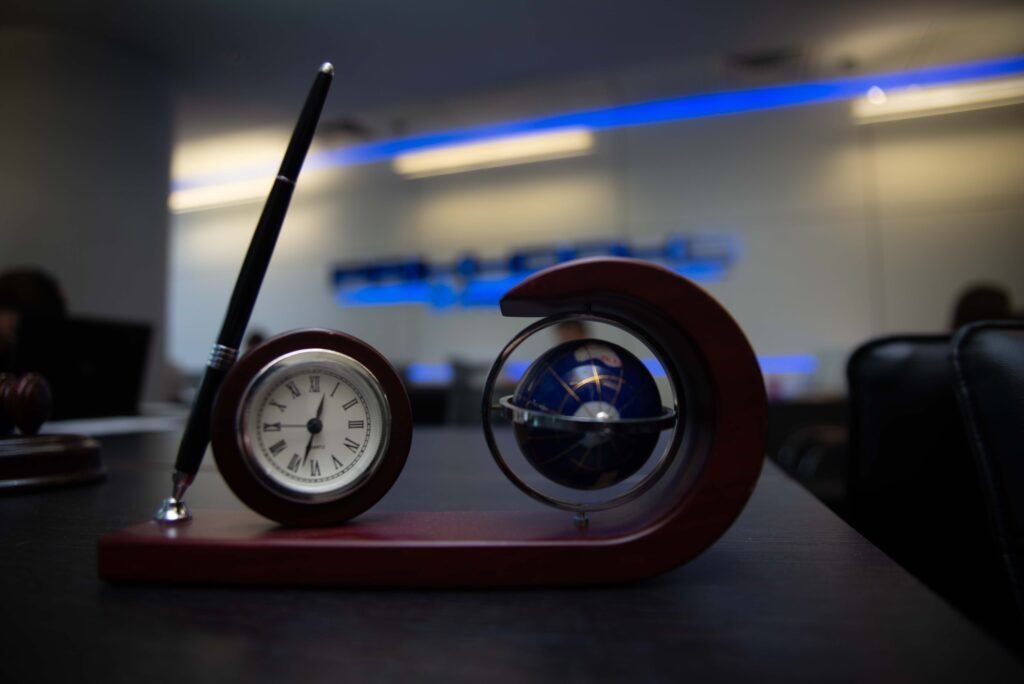
"We are laying the legal foundations for real estate and general development!"
Lawyer
Specializes in real estate registration, solving various issues related to putting into operation, reconstruction, redevelopment, unification, division of real estate objects. Land issues, concluding agreements with real estate.
Changing the purpose of the premises or building
Changing the intended purpose of a room or building is becoming an urgent issue for many individuals and companies. It is a legal process by which the functional purpose of a room or building is changed, usually from residential to non-residential or vice versa. This process involves a large number of legal aspects and requirements that should be taken into account. Our company “Prykhodko and Partners” will help you every step of the way, both when transferring residential property into non-residential property and vice versa.
The main reasons for transferring an apartment or house to a non-residential premises
Transferring an apartment or house to non-residential premises can have a variety of reasons that should be considered. Below are some of the most common reasons.
- One of the main reasons is the conversion of residential real estate into commercial real estate for business activities. This may include the organization of a shop, office, restaurant, workshop or other type of enterprise.
- Some owners of apartments or houses turn them into non-residential objects for additional income. It can be the lease of premises for commercial activities or the sale of such real estate for a profitable purpose.
- The need for repair or reconstruction. Sometimes real estate owners convert residential premises into non-residential premises due to the need for significant repair or reconstruction, which does not correspond to the direct purpose of living.
These reasons can be single or combined, and they are determined by the specific circumstances and needs of the owner or investor.

What requirements must the premises meet when converting from residential to non-residential?
The conversion of premises from residential to non-residential has certain requirements that should be taken into account in order to comply with legislation and building regulations. Here are the main requirements that the premises must meet with such a change:
- The premises must be located on the first floor of the building or above a non-residential premises. It can also include basements, basement floors that fit into the non-residential category.
- It is important that the room has the opportunity to organize a separate exit that meets the requirements of fire safety and building regulations.
- The object and the building as a whole, where the room is located, should not be in an emergency or in an unauthorized condition. This includes requirements for the safety of building structures and engineering systems.
- The premises must not have registered residents, including minors, as this may affect the status of the premises and its purpose. There should also be no arrests, injunctions or other legal restrictions that could make it difficult to transfer to non-residential premises.
Compliance with these requirements is important for the legality and safety of construction processes. Before making changes in the purpose of the premises, you should get advice from legal and construction experts to avoid problems and violations.
The main reasons for the transfer of a non-residential object to a residential one
The conversion of a non-residential object into a residential one can be motivated by various factors and needs. Here are some of the most common reasons for this process:
- One of the main reasons is the need for real estate for living. This may be relevant for people looking for a new home or moving to another area. It is not possible to register in a non-residential premises.
- Some investors convert non-residential properties into residential properties with the aim of renting them out or selling them as residential properties. This can be beneficial from a financial point of view due to the demand for housing in the real estate market.
- Sometimes non-residential objects are converted into residential ones due to the need for serious repair or reconstruction. The owners may decide to use these objects for their own living after their restoration.
These reasons can be single or combined depending on the specific circumstances and needs of the owner or investor.

Obstacles and pitfalls
When converting a non-residential object into a residential one and vice versa, there may be various obstacles and pitfalls that should be taken into account before starting the process. Here are some of the most common:
- Legal restrictions.
- Technical aspects.
- Legal and legal aspects.
- Potential problems with future residents.
These obstacles can be solved by contacting our company “Prykhodko and Partners”. We are ready to provide you with professional advice and support at every stage of this complex process. Contact us for the best solutions and successful resolution of your case.
To receive a consultation or a price for changing the purpose of real estate – fill out the form below.
Calculate the cost of services
1 question
Do you need to change the purpose of the premises or building?
2 question
Is the real estate located in Kyiv?
3 question
Do you need legal assistance urgently?

Specializes in real estate registration, solving various issues related to putting into operation, reconstruction, redevelopment, unification, division of real estate objects. Land issues, concluding agreements with real estate.
TOP lawyers dealing with such cases in Ukraine
How to order the service? How do we work?
Our specialists in real estate practice are the best specialists who will qualitatively analyze your documents, advise or support your case.
- Application
- Calling a lawyer
and defining tasks - Contract and payment
- Consultation,
case analysis, specialist work
What is the price for a lawyer's consultation and assistance?
Price for services in the "Real estate and construction" category:
| The name of the service | Price, UAH | Terms |
|---|---|---|
| Production of a technical passport for a house / apartment | from 2000 UAH | 1-3 days |
| Legitimize replanning | from 15 0000 UAH | 3 weeks |
| Legalize squatter | from 30 0000 UAH | 3 weeks |
| Legalization of the extension | from 20 000 UAH | 1 month |
| Commissioning of the garden house | from 10 000 UAH | 2 weeks |
| Commissioning of gas stations | from 80 000 UAH | individually |
| Special permit for subsoil use | from 90 000 UAH | individually |
| Privatization of a cooperative apartment in Kyiv | from 38 000 UAH | individually |
| Land privatization | from 50 000 UAH | 9-12 months |
| Change of purpose of the land plot | from 40 000 UAH | 3 months |
| Changing the purpose of the premises or building | from 35 000 UAH | 1 month |
![]() from 5,000 to 90,000 UAH The price is valid for July 2024
from 5,000 to 90,000 UAH The price is valid for July 2024
In which regions of Ukraine do you work?
The department of real estate and land law, as a rule, works in Kyiv and the Kyiv region.
- We provide our services in all regions of the Kyiv region, for example:
- Bilotserkiv district (towns of Skvira, Tarasha, Bila Tserkva, Uzyn, Tetiiv).
- Boryspil district (the cities of Boryspil, Pereyaslav, Yagotyn).
- Brovary district (the cities of Brovary, Berezan).
- Buchansky district (towns of Bucha, Irpin, Vyshneve).
- Vyshhorod district (the cities of Vyshhorod, Slavutych).
- Obukhiv district (towns of Obukhiv, Boguslav,
- Vasylkiv, Kagarlyk, Myronivka, Rzhyshchiv, Ukrainka).
- Fastiv district (the cities of Fastiv, Boyarka).
It is worth noting that on some issues (services) we work throughout Ukraine, contact and clarify information by phone!
Do you provide consultations online or over the phone?
Yes! If you do not have the opportunity to come to the office in Kyiv, then you can pay and receive a consultation by phone or in one of the applications for conducting calls/conferences.
Do you provide free consultations?
Our consultations are paid. Our lawyers and advocates have a lot of experience, and we, as a business, value their time very much. That is why consultations on real estate or land are carried out only on a paid basis.
Of course, if you have 1-2 questions or just need an estimate of the cost of a more complex service, our specialist will listen to you and provide recommendations, but if you need a full-fledged legal opinion or consultation on your specific issue, this is a paid service.
You may also need:
Real estate and construction
Privatization of an apartment on the basis of a warrant
Read moreReal estate and construction
Legal assistance when buying a plot of land
Read moreReal estate and construction
Privatization of a cooperative apartment in Kyiv
Read moreReal estate and construction
Division of the apartment into two separate apartments
Read moreReal estate and construction
Legalize squatter
Read moreReal estate and construction
Land plot registration in the State Land Cadastre (DZK)
Read moreReal estate and construction
Land plot registration
Read moreLawyer services
Change of purpose of the land plot
Read moreReal estate and construction
Privatization of an apartment
Read moreReal estate and construction
Legal assistance when buying an apartment
Read moreReal estate and construction
Legalization of a private house
Read moreReal estate and construction
Land privatization
Read moreArticles on the topic:
call back
during the day









